29/01/2019
Master project: Temporal Trend of Emerging Environmental Contaminants in the Endangered St. Lawrence Estuary Beluga
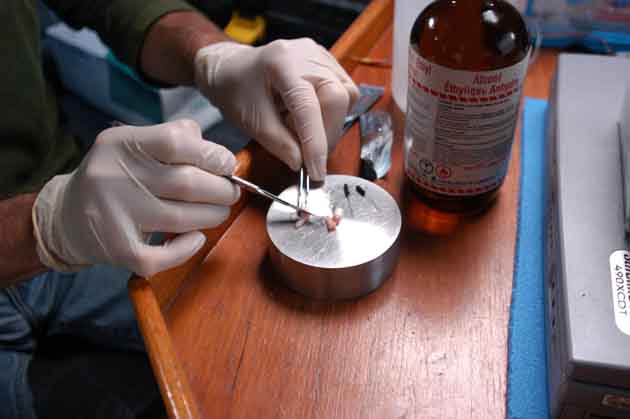

The St. Lawrence Estuary (SLE) beluga has been listed as an endangered species since 2014 by the Committee on the Status of Endangered Wildlife in Canada (COSEWIC). This small population of around 900 individuals inhabits a marine ecosystem significantly impacted by upstream anthropogenic activities. Therefore, chronic exposure to anthropogenic contaminants has been suggested as one factor affecting the health of SLE beluga and the recovery of this population. However, the occurrence and fate of many emerging contaminants in SLE beluga are unknown. The objectives of this project are to investigate the occurrence and temporal trend of industrial additives such as synthetic phenolic compounds, ultraviolet absorbents and aromatic secondary amines in SLE beluga tissues. This is a collaborative project with Université du Québec à Montréal (co‐supervisor: Jonathan Verreault), University of Montreal, University of Toronto, Environment and Climate Change Canada, Fisheries and Oceans Canada and GREMM.
MSc‐level funding provided for two years.
Project should start in May or September 2019
• Satisfy the basic requirements for admission in the MSc program of oceanography at UQAR;
• BSc degree in Chemistry, Biochemistry, Biology, Oceanography, or a related discipline;
• Knowledge in analytical chemistry, environmental chemistry or ecotoxicology is an asset;
• Proficiency in French. Proof of French proficiency will be required for non‐Frenchspeaking candidates (e.g., international French test score > 650);
• Good communication skill in English is an asset.
To apply, send your CV and BSc transcript before February 18, 2019 to:
Zhe Lu
Institut des Sciences de la Mer de Rimouski
Université du Québec à Rimouski
Phone: 418‐723‐1986, ext. 1174
E‐mail: [email protected]
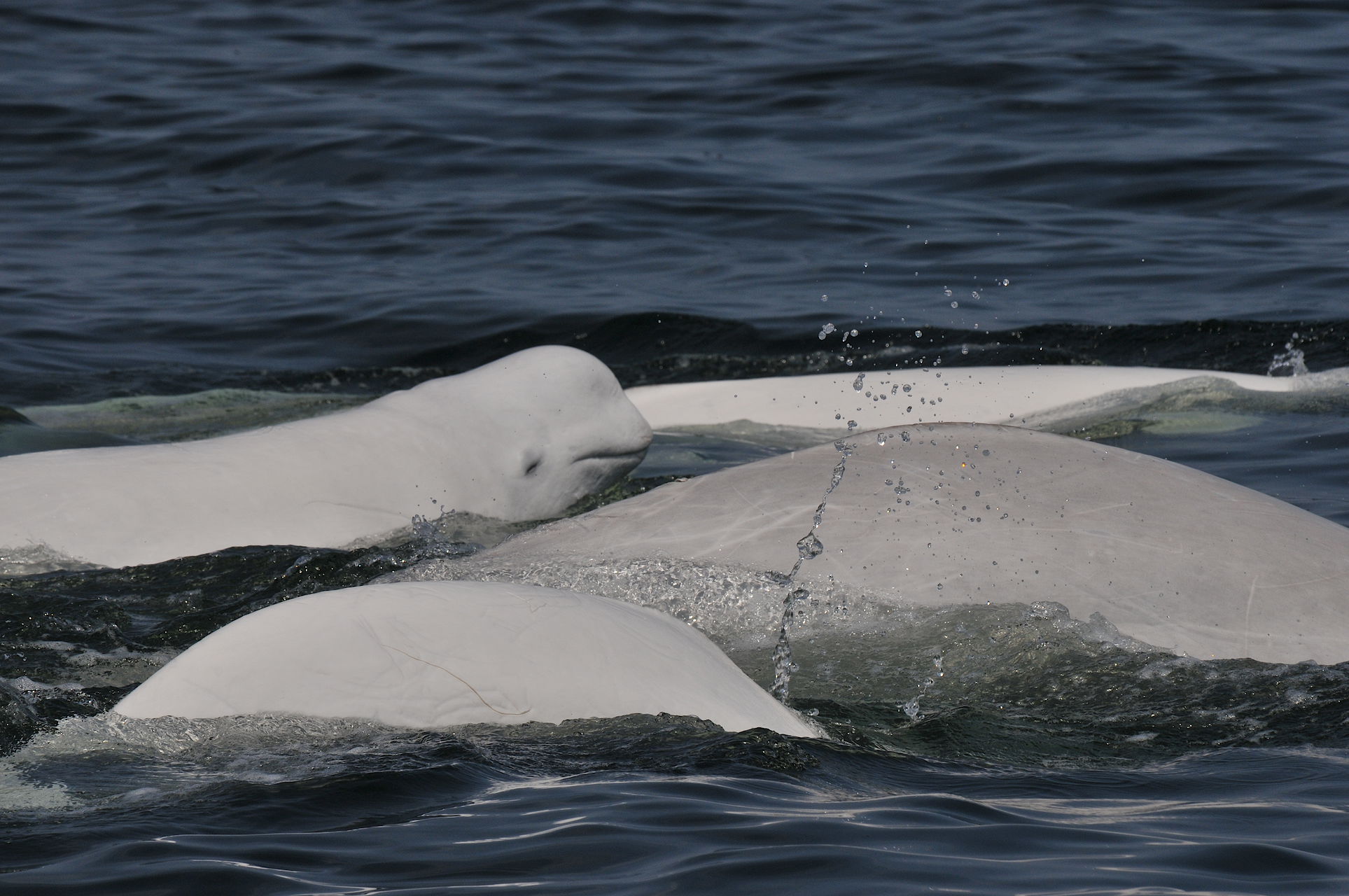
The St. Lawrence Estuary beluga population is currently listed as Endangered under the Canadian Species At Risk Act and the Loi sur les espèces menacées et vulnérables du Québec. Several threats to its recovery related to the navigation activities occurring in the population’s summer habitat are identified such as exposure to underwater noise and disturbance. Mitigating navigation impacts requires a good understanding of the factors underlying the behaviours of habitat selection along with the movements of this species in the St. Lawrence Estuary and the Saguenay (i.e. summer habitat). However, this understanding is currently incomplete because: i) few studies have tried to identify the mechanisms underlying the spatial distribution and movements of the belugas in the summer habitat, and ii) the rare studies did not consider beluga’s social behaviour or group fusion-fission dynamics.
This PhD project aims at identifying the factors (biotic and abiotic) explaining the spatial distribution and the movements of beluga groups in their summer habitat, acknowledging that habitat selection behaviours and movements might be influenced by the social and gregarious behaviour of this species. The project will also look into the group fusion-fission dynamics in the beluga’s summer habitat by exploring the conditions (e.g. habitat characteristics, time of day, group size and composition) under which pairs of known individuals are encountered in the same groups or not. This will allow to interpret the spatio-temporal variation in group size and composition and ultimately contribute to explain the spatial distribution of this species in its summer habitat. This project will provide valuable knowledge to improve our understanding of navigation impacts on the St. Lawrence beluga’s habitat selection and movements in its summer habitat. These results will be integrated in a model that simulates the movements of individual belugasvia a collaboration with modellers.
This project will be carried out using existing datasets and might also require additional fieldwork to collect new observational data. The selected candidate will be part of the Natural Science Department and will be based in Ripon (QC) at Institut des Sciences de la Forêt tempérée (ISFORT: http://isfort.uqo.ca/). She/He will work with researchers from the GREMM (Tadoussac) and Fisheries and Oceans Canada (Mont-Joli).
The desired candidate will show dynamism, motivation, intellectual curiosity and creativity, ability to work independently and as part of a team, along with a great sense of initiative. She/He will be encouraged and supported to travel for scientific communications (conferences, workshops), meetings with partners and stakeholders. The project funding is provided by the Government of Quebec. The selected candidate will contribute to the production of deliverables for the Ministry for Forests, Wildlife, and Parks and Ministry for Maritime Affairs on a yearly basis.
The candidate must hold a Master’s degree in biological sciences, or related field.
The following expertise and skills will be considered as assets:
– expertise on animal behaviour related to habitat selection and movements;
– expertise on social behaviour and fusion-fission dynamics in gregarious species;
– expertise on marine mammals;
– great expertise in data management and analysis with R software.
Project start: September 2019
Treatment: 20 000$/year for 3 years
Director: Angélique Dupuch (UQO-ISFORT)
Co-director : Véronique Lesage (DFO)
Collaborators: Clément Chion (UQO-ISFORT), Robert Michaud (GREMM), and Tyler Bonnell (Lethbridge University)
Application: Email your academic CV (long form), all academic records for bachelor’s and master’s degrees, an application letter (detailing your skills and assets related to the project requirements), and the name and contact information of 3 academic references to: angelique.dupuch @ uqo.ca, clement.chion @ uqo.ca, rmichaud @ gremm.org, veronique.lesage @ dfo-mpo.gc.ca, and tyler.bonnell @ uleth.ca.
Applications will be considered until the position is filled.
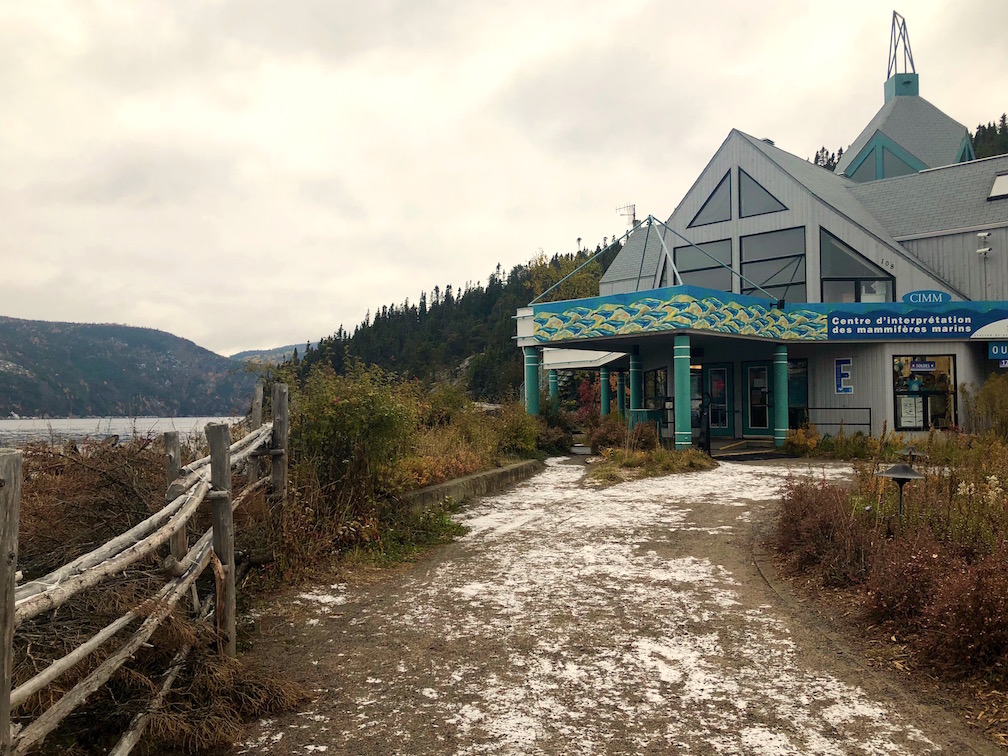
The snow falls gently on Tadoussac. That’s it, it’s time to conclude our 2018 summer season.
Our Centre of Interpretation on Marine Mammals in Tadoussac closed for the winter on November 2. Once again this year, we welcomed more than 30,000 visitors who were able to dive into the fascinating world of marine mammals. A success!
The research boats, the BpJAM and the Bleuvet, have also been taken out of the water in the past few weeks, and the temporary tower at Baie Sainte-Marguerite has been dismantled. During the winter, we will start analyzing the thousands of data collected. How many individuals will enter the photo-identification catalogues? What new pages will we add to the individual whale stories?
On our virtual magazine Whales Online.org, follow the progress of our work, discover what other teams are doing and let yourself be inspired by whale stories.
Thank you to everyone who came to visit us! Thank you also to the naturalists, store attendants, receptionists, maintenance team, trainees, research assistants and volunteers for your involvement!
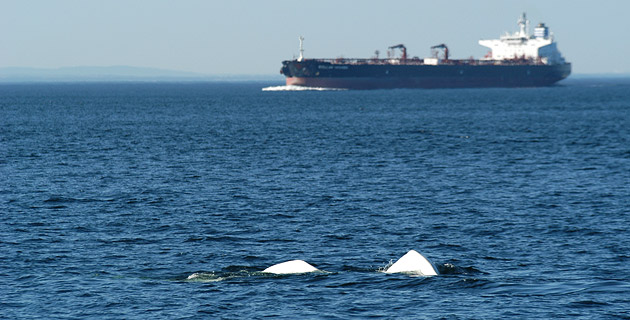
Spatiotemporal Individual-Based Modelling of the St. Lawrence Estuary Beluga Population
St. Lawrence Estuary beluga population is currently listed as endangered under the Species at Risk Act of Canada. It is also listed as threatened under the Quebec Act Respecting Threatened or Vulnerable Species. Several threats related to navigation activities in the beluga’s critical habitat limit its recovery, including disturbance and exposure to boats’ underwater noise. Mitigating such navigation impacts requires tools to evaluate the performance of potential measures before taking action. The postdoc fellow’s project is part of a broader research program that aims at building a multiagent simulator of boat and whale movements in both the Saguenay and St. Lawrence Rivers to assess the effectiveness of potential mitigation options. The broader goal of the research program is to support a collaborative process to enhance the protection of the at-risk St. Lawrence Estuary beluga population in its critical summer habitat.
The postdoc fellow’s project aims at building calibrated algorithms that accurately simulate belugas’ individual movements by reproducing data-extracted statistical patterns. Several concurrent hypotheses currently exist regarding beluga movements, social dynamics, and responses to the presence of boats in their critical habitat. These hypotheses will be made explicit by the selected candidate. The related uncertainties will be translated into the proposition of concurrent movement algorithms. Statistical patterns will need to be identified at different scales (individual, group and population) and extracted from several datasets provided by collaborators. These patterns will allow to calibrate the movements algorithms and assess their performance using the Pattern-Oriented Modelling approach. Based on a literature review, the selected candidate will propose a series of beluga-specific indicators of navigation impacts (e.g. masking/communication space, disturbance, collision risks). These indicators will be used to assess the performance of mitigation scenarios using the final simulator that will couple a valid beluga IBM with an existing model of boat movements. The development of beluga’s movement algorithms will be based on behavioral ecology theories and developed in collaboration with researchers who have been studying belugas since the early 80’s. Although this modelling project does not require any data collection in the field, the selected candidate will work in close collaboration with researchers from Group for Research and Education on Marine Mammals (GREMM), Fisheries and Oceans Canada, and Saguenay–St. Lawrence Marine Park, and will have the opportunity to take part in their field campaign.
The desired candidate will show dynamism, motivation, intellectual curiosity and creativity, ability to work independently and as part of a team, along with a great sense of initiative. He/She will be encouraged and supported to travel for scientific communications (conferences, workshops), meetings with partners and stakeholders. The project funding is provided by the Government of Quebec. The selected candidate will be required to participate in the production of deliverables for the Ministry for Forests, Wildlife, and Parks and Ministry for Maritime Affairs on a yearly basis.
• PhD in Natural Sciences, Engineering, or any discipline relevant for the project
• Proficiency in individual-based modelling
• Java programming or proficiency in another object-oriented programming language
• Preparing scholarship and grant applications
• Proficiency in scientific communication (written and oral) to experts and laypeople, including writing scientific articles and conducting literature reviews
• Knowledge in behavioural ecology especially social mammals
• Knowledge in underwater acoustics and/or bioacoustics
• Knowledge in GIS, Spatial analysis and spatial statistics
• Other technical skills: R, Python, QGIS and Repast Simphony
• 47k$/year (including UQO’s social benefits)
• From now to March 31st 2020 (with possibility of extension)
• Preferably Ripon or Gatineau (Québec, Canada)
Email your academic CV (long form), application letter (detailing your skills and assets related to the project requirements), and the name and contact information of 3 academic references to:
o Pr. Clément Chion ([email protected]; [email protected])
o Pr. Angélique Dupuch ([email protected])
• Deadline: September 30th 2018, or until the position is filled.
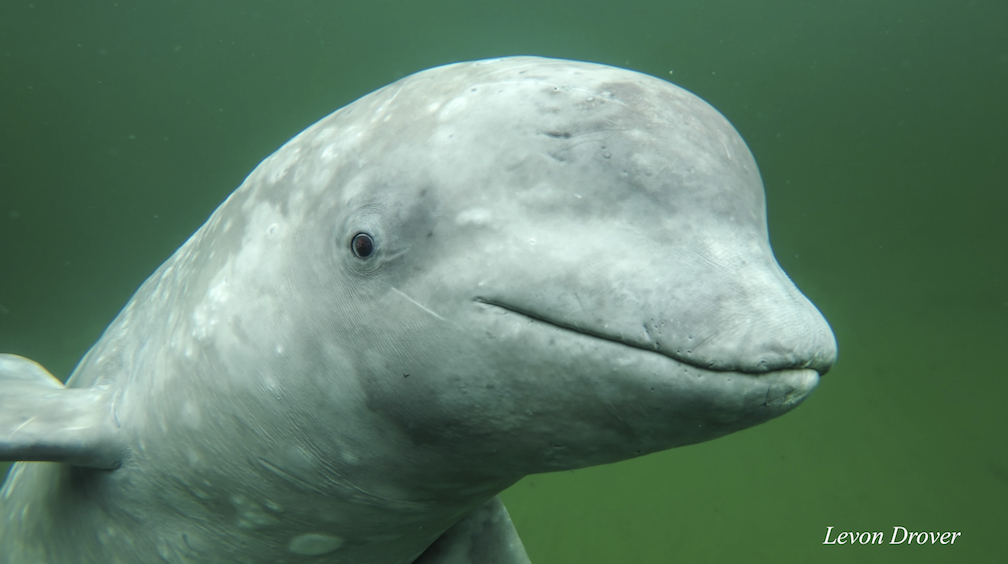
Great news! The beluga that was trapped in the Nepisiguit River in New Brunswick and relocated to the St. Lawrence Estuary on June 15, 2017, has been resighted! During this unprecedented operation, the animal was captured and flown to Rivière-du-Loup before being subsequently released into the waters of the St. Lawrence near Cacouna. The St. Lawrence beluga population is endangered. The operation aimed to determine the feasibility and challenges of such a relocation operation, as well as to assess the chances of success for a solitary young beluga to reintegrate a social group over the long term and contribute to the recovery of the population.
“According to the images that have been transmitted to us, the Nepisiguit beluga appears to be in good health. He appears vigorous and is swimming well,” confirms veterinarian specialist Dr. Stéphane Lair of the Université de Montréal’s Faculty of Veterinary Medicine.
The team was surprised, however, that the animal was resighted far from its release site in the summer range of the St. Lawrence beluga. On July 14, the rescued beluga was identified in Ingonish, off Cape Breton, Nova Scotia, by Catherine Kinsman of the Whale Stewardship Project: ” I was called to give atalk in the community about two vagrant belugas. While watching videos of them, I kept looking at the gray beluga’s skin and a scar pattern I was sure I’d seen before. Then photos of the Nepisiguit beluga matched! I was so excited to identify him.”He is in the company of another unidentified male beluga.
“We suspected that the animal survived and we can now confirm this. This raises some questions, however, about whether this animal will ever contribute to the recovery of the St. Lawrence beluga”says Véronique Lesage, Research Scientist and beluga specialist with Fisheries and Oceans Canada.
Authorities and researchers are concerned about the welfare of these isolated belugas given the degree of interaction they have with humans. “We often get vagrant animals such as these in areas outside the St. Lawrence Estuary and they can become a source of fascination for the public,” says Tonya Wimmer, Executive Director of the Marine Animal Response Society (MARS). “It is important that people maintain a safe distance, which the new federal marine mammal regulations dictate must be at least 100 m.” The two belugas off Ingonish are being closely monitored by Fisheries and Oceans Canada fishery officers.
The adventure of the Nepisiguit beluga is therefore not over. “We had to wait a long time to hear from the Nepisiguit beluga and we would have preferred that he stay with other belugas in the St. Lawrence Estuary. We will try to gather more information on this vagrant individual to understand why the animal has moved away from the St. Lawrence Estuary, and whether or not it will eventually return to this location,” says Robert Michaud, Scientific Director of the Group for Research and Education on Marine Mammals (GREMM) and coordinator of the relocation operation.
The public is reminded that it is illegal to approach within 100 m of these animals and to attempt to feed them or swim or otherwise interact with them. “The best chance for these animals to return to their fellow belugas is if we minimize our interactions with them,” adds Michaud.
Recap of 2017 Events
On June 2, 2017, the Marine Animal Response Society (MARS) received a report of a beluga swimming up the Nepisiguit River near Bathurst, New Brunswick. The whale was not inclined to leave the river and its health was failing. Since the St. Lawrence beluga population is classified as “endangered” and has been declining considerably since the early 2000s, the survival of a single individual could have an influence on the population’s recovery. Based on consultations between MARS, GREMM, Fisheries and Oceans Canada, and veterinarians from the Université de Montréal, the Vancouver Aquarium and the John G. Shedd Aquarium in Chicago, it was decided that the animal should be captured and relocated back to the St. Lawrence Estuary to determine whether it is possible to reintegrate a vagrant beluga with its natal population.
On June 15, the beluga was captured in the river and transported to the Bathurst airport, from where it was flown to Rivière-du-Loup (during which time it was rehydrated) and taken to the port of Gros-Cacouna, where it was placed on a small vessel and released into the water near a group of belugas in the St. Lawrence Estuary. A tag attached to the animal’s back transmitted satellite positions for 19 days following its release. The last time a signal was received from the Nepisiguit River beluga was on July 4.
Related links
Images and footage (please include credits written in the files name when you use a picture)
https://www.facebook.com/marineanimalresponsesociety/
http://baleinesendirect.org/beluga_bathurst/
https://www.facebook.com/baleinesendirect
http://whalestewardship.org/Home.html
Contact information
Tonya Wimmer, Executive Director, Marine Animal Response Society (MARS), 1-866-567-6277
Marie-Ève Muller, Communication Officer, Group for Research and Education on Marine Mammals (GREMM), 418-235-4701 (office) 418-717-6061 (cellphone), [email protected].
– 30 –
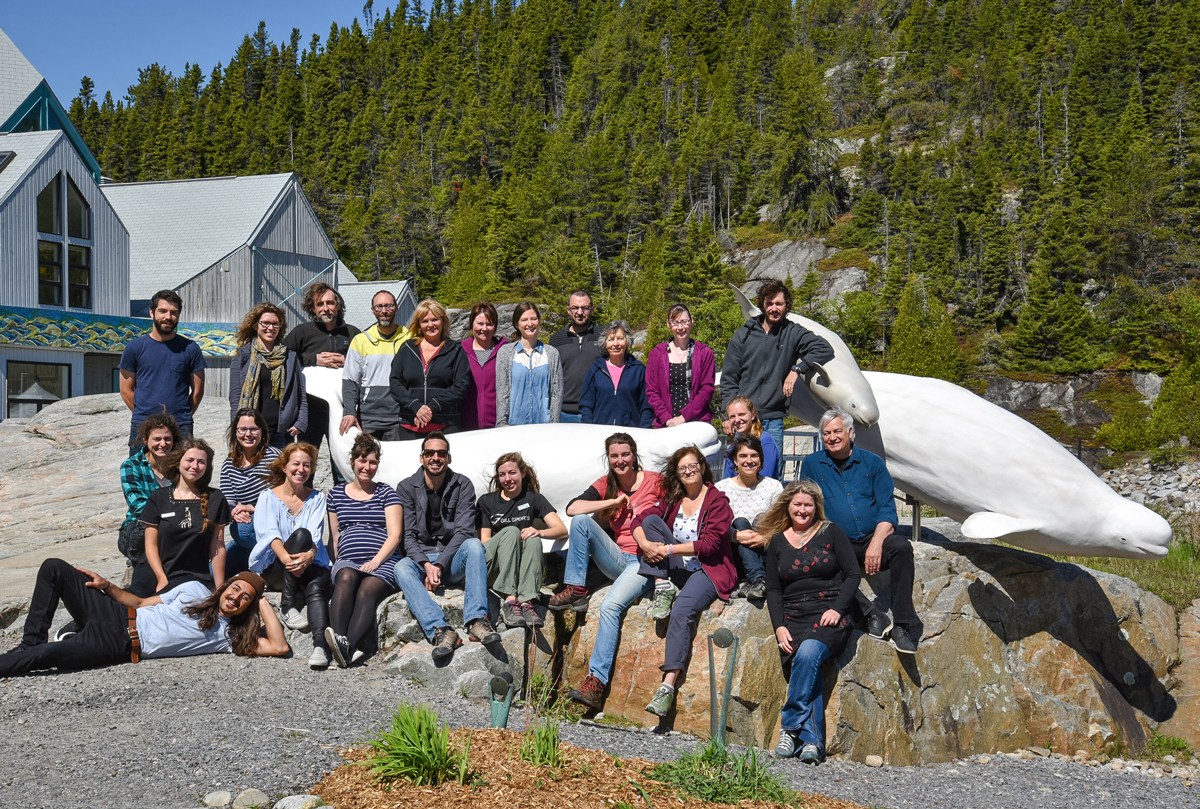
That’s it! The Bleuvet and Gremmlin, GREMM’s research boats, are now ready to go. The Marine Mammal Emergency Call Centre team is in place to receive case reports. At the Marine Mammal Interpretation Centre (CIMM), the naturalists, the reception team and the boutique team opened the doors of the museum in mid-May and the new ones will complete their training in the coming days. For Whales Online, new fingers are typing on keyboards and filming behind the camera to relay news about marine mammals.
Will you be joining us this summer? Come and see us in Tadoussac!

The Souffleur is the annual newsletter of the Group for research and education on marine mammals (GREMM). For the record, the first Souffleur was printed in 1989. Each year, GREMM partners and friends received the newsletter. But then, after 2013, the newsletter ran out of steam. Let that not hold! A new edition has just been published. And you will see, the whole GREMM team worked hard in 2017, thanks to your support. We won’t tell you any more, go read it!
To read it in English: The Souffleur
To read it in French: Le Souffleur
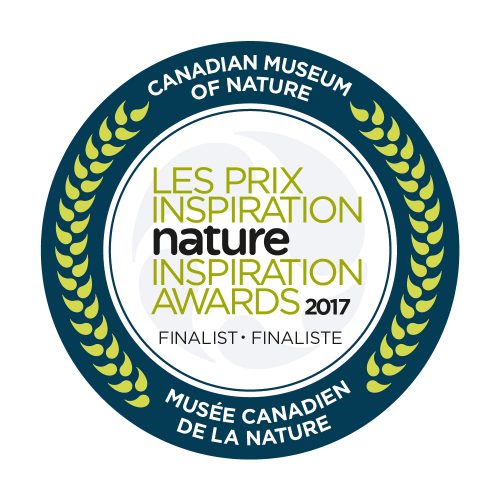
It is with great pride that we can announce that we are finalists for the Nature Inspiration Awards of the Canadian Museum of Nature in the category of “Not-for-Profit Organization (Small and Medium)”.
The purpose of this award is to highlight the work of organizations that promote the creation of links between Canadians and nature and that work for the conservation of the environment. Our mission fits with this award.
The education and outreach efforts of our Marine Mammals Interpretation Center and our web magazine Whales Online have helped us stand out.
We invite you to discover the work of the other finalists at our side here! We are in very good company.
The winners were announced on November 8 in Ottawa. We congratulates Nature Canada for their excellent work!
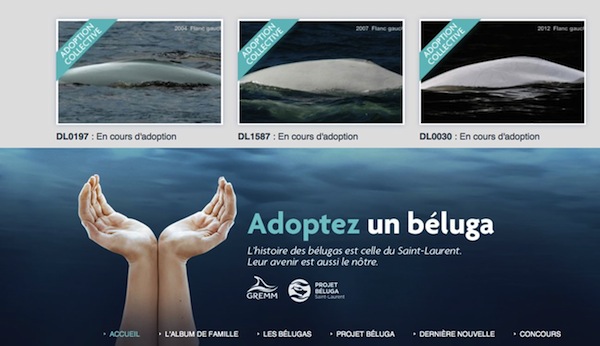
Beluga stories: this is the final episode of the transcript of the training lecture given by Robert Michaud at the CIMM on June 22, 2015. In this text and audio episode: the genetic diversity of the population and the possibility of an introduction of belugas from the Arctic are discussed at length. A closer look is taken at plans to install an oil platform in the Gulf of St. Lawrence. And what can be done to aid the belugas’ cause?
On June 22, Robert Michaud, scientific director and co-founder of the Group for Research and Education on Marine Mammals (GREMM), gave a training lecture at the Marine Mammal Interpretation Centre (CIMM) in Tadoussac. The biologist and St. Lawrence beluga specialist shared stories about these whales and raised questions about the current decline in the St. Lawrence population. Whales Online brings you excerpts of this presentation, in the form of a sort of written and audio series to be followed all summer and fall.
What critical threshold would have to be reached by the St. Lawrence beluga population to consider relocating belugas from the Arctic? At what number of individuals is the critical threshold of genetic diversity reached?
Robert Michaud fields the question and Nadia Ménard, ecologist and team leader for the Saguenay–St. Lawrence Marine Park, adds some of her own thoughts. The project to reintroduce the Atlantic walrus, which is extirpated in the St. Lawrence, is discussed. Would introducing or reintroducing a population or species cause problems?
Listen (4 min 15 s) (in French)

The Atlantic walrus (Odebenus rosmarus rosmarus), the St. Lawrence population of which is extirpated. (Photo: Ansgar Walk/Creative Commons)
What has become of plans to drill for hydrocarbons in the Gulf of St. Lawrence, notably the Old Harry geological structure?
Listen (3 min 15 s) (in French)
What can be done to maintain the St. Lawrence beluga population? How can stress agents that endanger the population be limited? What’s happening with the project to create a Marine Protected Area (MPA) in the St. Lawrence Estuary?
Listen (4 min 59 s) (in French)
On the Fisheries and Oceans Canada website:
The Atlantic walrus
St. Lawrence Estuary Area of Interest
On Whales Online:
How Far Back Does the Presence of Belugas in the St. Lawrence Go?
About the beluga (data sheet)
Previous episodes of the training lecture:
Episode 1
Episode 2
Episode 3
Episode 4
Episode 5
Episode 6
Episode 7
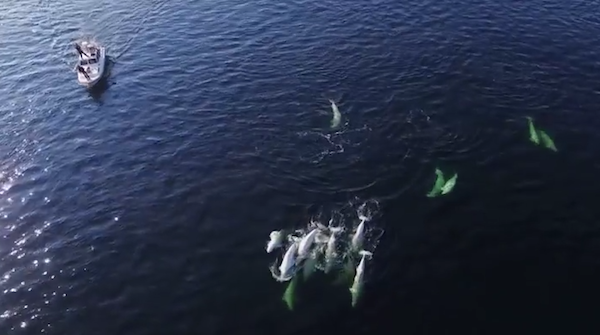
At the dawn of the beluga seasonal migration, one question remains: where will they winter? This is the question that Belugas on the Move attempts to answer. To follow the researchers in their work, check out the regularly updated “Topic of the Hour”.
This project and how it has unfolded to date are presented in this video clip by Yannick Rose © Productions Novo Media 2014; amazing images of belugas and researchers in action!